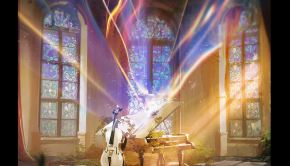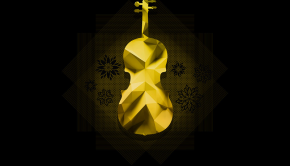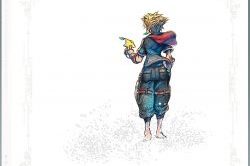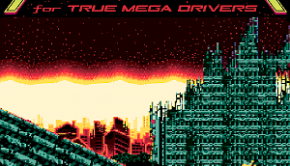The Legend Artists -Otakara Hakken!-
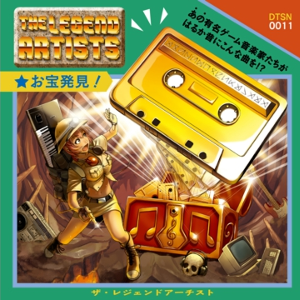 |
Album Title: The Legend Artists -Otakara Hakken!- |
| Record Label: Detune |
|
| Catalog No.: DTSN-0011 |
|
| Release Date: June 4, 2014 |
|
| Purchase: Buy at Amazon Japan |
Overview
One of the latest releases from Nobuyoshi Sano’s DETUNE label is titled THE LEGEND ARTISTS Otakara Hakken! This album is unique in the fact that it compiles early demo music from a variety of video game artists, including well-known names such as Yuzo Koshiro and Hitoshi Sakimoto, as well as more niche composers such as Keishi Yonao and Yasumasa Kitagawa. Given that these works were composed in order to demonstrate the artists’ capabilities as a composer, how do they sound compared to some of their game works?
Body
The album opens with “Sca3” by Yuzo Koshiro that features a jovial atmosphere with its retro sounds. It doesn’t develop that much, given its short length, but it does feature a memorable melody. Yuu Miyake’s “My March” features an adventurous tone in the style of a march that would work well in an adventure or role-playing game. By contrast, Keishi Yonao’s “APOLLO 1” is an epic FM tune that definitely gives off a fantastic shooter sound with its fantastic melody and atmosphere. Continuing in the FM vein, Hitoshi Sakimoto’s “Exploding Guitar” also gives off a shooter soundscape. The melody is very heroic and definitely one of the best aspects of the piece. While Sakimoto may be more known for his orchestral works, this definitely showcases his ability to create different soundscapes, especially given technical limitations at the time. Both Yonao’s and Sakimoto’s contributions to the album are definitely some of the early highlights.
Aki Hata, a former Konami musician, showcases another tune that would be apt for a shooter. Titled “ShootingGame01,” it features a futuristic sound that definitely reminds me, at times, of the early games in the Darius series. The melody is catchy and really works well with the accompanying beat and harmonies. As for Capcom’s Yasumasa Kitagawa, “The Lion That Was Released into the City” is a fun tune that features a mix of orchestral tones and some fantastic drum work. There is a real sense of adventure in this tune and I think that the melody definitely helps in the regard. Unfortunately “Cloudy” by Michiko Naruke is one of the weaker tunes on the album. It gives off an RPG vibe with its orchestral focus, but I find that the introduction to the piece is a bit lackluster; however, it does manage to improve during its duration providing a variety of atmospheres that would fit various scenarios in such a game.
“Torrent,” by Yoko Shimomura, is a classically inspired piano tune that really gives an insight to her prominent piano works in her later soundtracks. This provides some testament to Shimomura’s early days, when the artist wanted to be a pianist rather than composer. “Morning Star” by Phantasy Star Online’s Hideaki Kobayashi features a jazzy and pop sound. The synth is unsurprisingly a bit poor, particularly in the brass, but the overall feeling of the piece is one of relaxation. It definitely showcases Kobayashi’s skill at working with a variety of instrumentation. The two composers at Taito, Hirokazu Koshio and Shohei Tsuchiya, also contribute some pieces. “Xemporary,” by the former, is a predominantly electronic tune with some jazzy piano chords at times. It gives off a nice energy, but does lack a bit more in terms of melody. “Badger,” by Tsuchiya, is also another electronic piece, although one that has a bit more of an organic touch thanks to the warm synthesizer featured in the melody.
Produced by the album creator Nobuyoshi Sano, “Kulala brings spring” is unfortunately one of my least favorites on the album. The focus is definitely on woodwinds, but the sound is very simplistic and doesn’t, in my opinion, showcase what Sano is known for in his game compositions. Likewise, “A Guard’s Song” by Noriyuki Iwadare is also a very strange choice. The demo tune is a vocal theme, featuring himself of vocals, that doesn’t really impress that much with its vocals or its quirky backing composition. Hiro’s, “ORIGINAL MUSIC! ★1985 Track_01,” brings things back to the retro sound that the album started with. There is an interesting vibe in this tune, one that has a very tribal sound in its rhythm, however, the lack of melody and more focus on rhythm definitely makes this tune a bit of a chore to get through. Lastly, the album ends with “X-1 in SWAN –Black Hole X-1-” by Takayuki Aihara, features a sinister soundscape with its brooding percussion and ominous organ. It’s a bit chaotic, at times, becoming a bit too cacophonous, but it does manage, on the whole, to end the album on a good note.
Summary
In the end, The Legend Artists -Otakara Hakken!-, given its premise, is a fairly strong album. Many of the composers’ demos give a strong indication of why they were able to land jobs in the industry, although there are a few questionable choices included on the album, given the strong reputation that they have in the industry that makes me wonder if they couldn’t have chosen a different demo tune to showcase. In the end, the album is an interesting insight into the early works of various composers and one that might be worth a purchase if you are into such works.
Do you agree with the review and score? Let us know in the comments below!
3
Posted on August 3, 2014 by Don Kotowski. Last modified on August 3, 2014.

